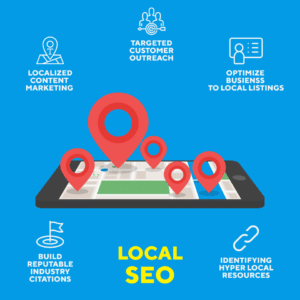
Discover SEO Types
In the area of digital marketing, SEO is a broad topic that includes many different tactics. The practice of enhancing your website through search engine optimization, or SEO, will help you rank higher on Google for important terms linked to your company. There are several ways to benefit from SEO, which is one of the most efficient digital marketing strategies you can use to invest your time in. This blog post will examine the various SEO types. So let’s dig in the SEO types.
On-page SEO
The process of optimizing the content on your website is known as on-page SEO, which is also referred to as on-site SEO occasionally. Your body copy, keywords, headers, meta titles, meta descriptions, photos, and more can all be a part of this.
The use of keywords during on-page SEO optimization is one of the most used techniques. Users enter terms into search engines to produce a list of pertinent search results.
You must undertake keyword research to learn the terms and phrases people use to find your products and services online in order to help valuable leads find your business.
Afterwards, you may include those keywords in crucial areas of your website, such as headings, page titles, and meta descriptions. To address the keywords, you can also write original content.
You may make your business appear higher in search results by focusing on keywords relating to your industry and producing informative content. As a consequence, you will generate more leads and income.
OFF-Page SEO
All actions that can be taken to raise a website’s search engine rankings but have nothing to do with the website’s code or content are collectively referred to as “off-page SEO.” To put it another way, anything you can do outside of your website is done to raise the search engine rankings of your website.
There are several strategies to increase the number of backlinks to your website, but one of the most effective is to provide high-quality content that other website owners will want to connect to. This might be in the form of a blog post, infographic, or video. When you have created something that you think other people will find beneficial, you should get in touch with them and let them know about it. Then, if they believe their users will get something from it, they usually are happy to include a link to it on their website.
Technical SEO
Technical SEO entails enhancing your site’s backend to make it function properly and raise its rating. These are components of your website’s backend. Even if your website has a stunning design, it won’t matter the optimization of its technical parts are. The term “technical SEO” refers to the process of making a website more visible and generating more organic search results. It belongs to the broader SEO sector but is a specialist area (Search Engine Optimization). Although it has many components, some of the most common ones are coding, labeling, and redirecting improvements to website architecture. This SEO type can also comprise addressing any problems preventing the website from being properly indexed, as well as making it faster and more mobile-friendly.
Here are a few things to think about:
Site Response Time
Visitors are no longer willing to wait for pages to load. They will leave your article and move on to the next website giving a comparable piece if your web pages take forever to load. Observe this! The competing websites now have significantly faster load speeds.
The average human attention span is 8 seconds. You have less than 8 seconds to persuade a visitor that your web page offers the information they require if your metadata manages to catch their attention. More than two seconds should pass before your website loads.
Being Mobile Friendly
Businesses frequently believe that customers are merely using their computers to browse their websites. Rarely is such the case. Users may find it more necessary to monitor your website or place of business from a mobile device due to a number of causes.
Numerous studies have shown that a site’s blog or post is more likely to be viewed if it is more mobile-friendly.
Check for Duplicate Content
To determine which blog post shares material with another one, conduct a thorough audit of your entire website. Scrape the content or change it after finding it, then republish it.
Cannibalization Audit Using Keywords
Confusion of the search engines is something you want to avoid in your SEO journey. If there are two posts on your website with the same seed keywords, the search engine must choose which post the visitor will see. Search engines will automatically read your website and select which page best serves the visitor.
Local SEO

It can be a fantastic source for link development and organic search in addition to being a great way to direct clients online to find your brick and mortar company. This is due to the fact that local searches, like “Cabinet vendors near me,” will return results that are particular to the searcher’s location.
In the end, how well you optimize your “Google My Business” page will determine where you rank for local SEO. Given that Google will only advise your services based on proximity, ratings, company hours, services delivered, and a few other factors, Google has precise principles and criteria that you should follow while optimizing the profile.
